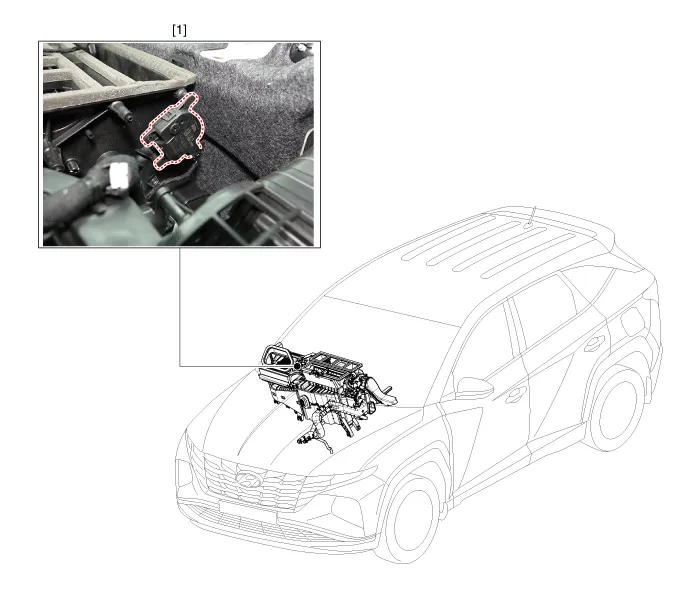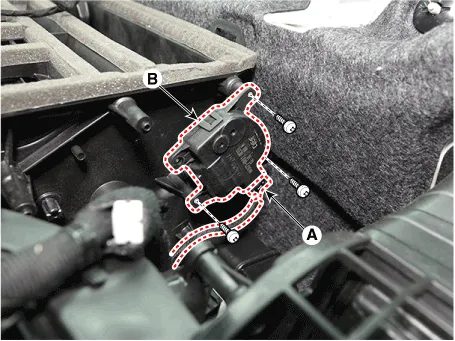Hyundai Tucson: Heater / Auto Defoging Actuator

1. Auto defogging actuator
1.Turn the ignition switch OFF.
2.Disconnect the auto defogging connector.
3.Verify that the auto defogging actuator operates to the open position when connecting 12V to terminal 3 and grounding terminal 6. Verify that the auto defogging actuator operates to the close position when connected in reverse.

1. -
2. -
3. DEF (Close)
4. DEF (Open)
5. Sensor (+ 5V)
6. Feedback signal
7. Sensoer ground
4.Connect the auto defogging actuator connector.
5.Turn the ignition switch ON.
6.Check the voltage between terminals 5 and 4.
| Door position | Voltage (4-5) | Error detecting |
| DEF (ON) | 3.5 ± 0.15 V | Low voltage : 0.1V or less |
| DEF (OFF) | 0.5 ± 0.15 V | High voltage : 4.9V or more |
* It will feedback the current position of the actuator to controls.
7.If the measured voltage is not within specification, check the operation by replacing the existing auto defogging actuator with a new genuine part. After that, determine whether replacement of the auto defogging actuator is required or not.
8.Replace the auto defogging actuator if it is proved that there is a problem with it.
1.Disconnect the negative (-) battery terminal.
2.Remove the main crash pad assembly.(Refer to Body (Interior and Exterior) - "Main Crash Pad Assembly")
3.Disconenct the connector (A) and loosen the mounting screws and remove the auto defogging actuator (B).

4.Install in the reverse order of removal.
 Mode Control Actuator
Mode Control Actuator
- Description
The mode control actuator is located at the heater unit.It adjusts the
position of the mode door by operating the mode control actuator based
on the signal of the A/C control unit ...
 Blower
Blower
...
Other information:
Hyundai Tucson (NX4) 2022-2025 Service Manual: Rear Door Window Glass
- Components Location
1. Rear door window glass
- Replacement
1.Remove the rear door trim.(Refer to Rear Door - "Rear Door Trim")
2.Remove the rear door belt outside weatherstrip.(Refer to Rear Door - "Rear Door Belt Outside Weatherstrip")
3.Remove the rear door belt inside weather ...
Hyundai Tucson (NX4) 2022-2025 Service Manual: AVN Keyboard Assembly
- Components
- Removal
1.Disconnct the negative (-) battery terminal.
2.Remove the front monitor lower cover (A).
3.Remove the front monitor lower cover after disconnecting the mood lamp connector (A).
4.Remove front monitor side cover (A) and (B).
5.Remove the front moni ...
